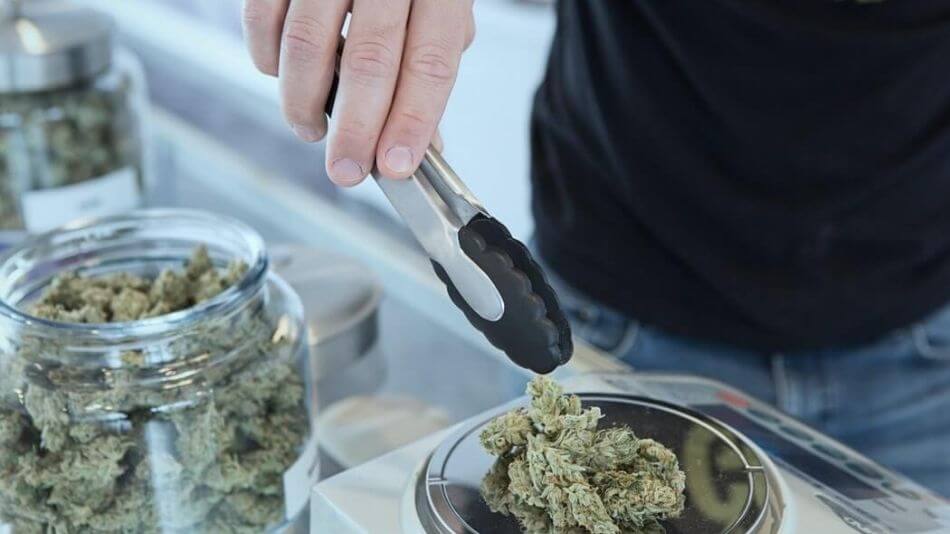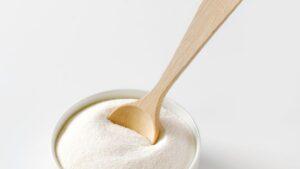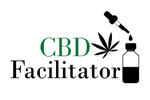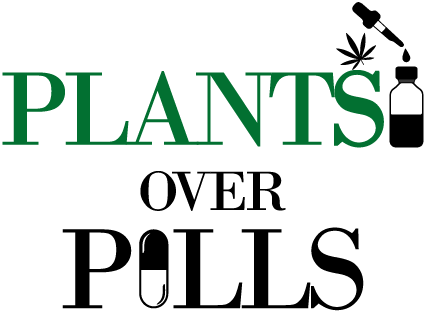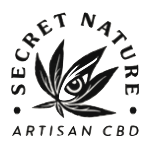Have you ever wondered just what it is about CBD that makes us feel so euphoric, relaxed, and pain-free? Understanding cannabinoids can give some insight.
Cannabinoids are a class of compounds found within cannabis. Some cannabinoids interact with the human body to control functions, but some do not. In fact, there are over 113 different cannabinoids in cannabis, and all have different effects or purposes.
The science of cannabinoids isn’t as complicated as it may seem, but it is rather fascinating nonetheless. Understanding this science is personally beneficial, but also advantageous over all; the more we learn, the more we can manipulate cannabinoids and take advantage of all the health benefits they may have to offer.
In this article, we’ve taken accurate information and used it to answer all the questions you care about so you can medicate safely and thoughtfully.
What exactly are cannabinoids?
The term cannabinoid refers to a class of compounds that are in the cannabis plant.
Some interact with the receptors found within the endocannabinoid system (ECS) in the human body to create different effects, but not all cannabinoids have an effect on our minds and bodies.
The most well-known of these cannabinoids are cannabidiol (CBD) and tetrahydrocannabinol (THC).
THC is famous for producing the “high” or “stoned” feeling that is associated with cannabis. CBD, on the other hand, is non-psychoactive, but responsible for most of the medicinal benefits that the cannabis plant offers.
What do cannabinoids do?
Cannabinoids, due to their effect on the endocannabinoid system, play a role in regulating a range of functions and processes, including:
- Sleep
- Mood
- Appetite
- Memory
- Reproduction
- Pain management
- Immune activity
Once inside the body, cannabinoids bind to specific receptors within the ECS to influence the above elements of homeostasis.
Different cannabinoids bind to different receptors and interact with the ECS in unique ways, so it’s possible for some cannabinoids to cause different effects than others.
This is the case with CBD and THC – though they are very similar in terms of makeup, they work with the ECS in very different ways.

How many types of cannabinoids are there?
In cannabinoid science, there are three different types of cannabinoids: endocannabinoids (made natural within our bodies), phytocannabinoids (plant based), and synthetic cannabinoids (man made in a lab).
Endocannabinoids
- Endocannabinoids occur naturally within the human body and activate receptors throughout the ECS.
- These lipid-based compounds are already found within your body, regardless of whether or not you consume cannabis. The ECS is responsible for regulating various physiological and cognitive processes including appetite, pain sensation, mood, memory, and immune activity.
Phytocannabinoids
- Phytocannabinoids are concentrated in the resin of flowers from female hemp/cannabis plants. Over 100 have been discovered with CBD and THC being the most widely studied.
- These compounds activate the same receptors as endocannabinoids.
- Endocannabinoid deficiencies can be supplemented with phytocannabinoids, allowing us to target specific symptoms in people suffering from health conditions. This enhances the overall effectiveness of many treatments.
Synthetic Cannabinoids
- Synthetic cannabinoids are man-made and less effective than natural cannabinoids. These controversial compounds are created mostly by pharmaceutical companies looking to mimic the effects of phytocannabinoids.
- Natural compounds can’t be patented. So, some argue that synthetic cannabinoids are the only way for pharmaceutical companies to profit off natural compounds like CBD and THC. Marinol, for example, mimics the effects of THC, but it is quite controversial. There is much less demand for these products when compared to natural cannabis.
How do cannabinoids work?
Cannabinoids work by activating, suppressing, or otherwise interacting with receptors in the endocannabinoid system. Let’s zoom in on the cannabinoid science.
Cannabinoid receptors are found throughout the brain and control a number of important processes in our bodies.
When a cannabinoid meets a receptor, it can match with and activate that receptor, similar to the effect of a key opening a lock.
What happens next will depend on the compound.
When certain cannabinoids, such as THC, meet the receptors, the individual may start to feel intoxicated.
Other cannabinoids, such as CBD, interact with the receptors to reduce feelings of pain or anxiety.
Because the human body contains so many of these receptors, naturally occurring cannabinoids play an important role in overall well-being for everyone. But whether or not you supplement the cannabinoids that already exist in your body with something more, like CBD oil or THC, is up to you.
What are examples of cannabinoids?
Again, there are hundreds of types of cannabinoids, but for the sake of understanding overall cannabinoid science, let’s break it down and look at the four most famous types of cannabinoids and what functions they serve.
Below is a list of cannabinoids (the most famous ones) and the cannabinoids derivatives.
THC (tetrahydrocannabinol)
- The primary psychoactive compound in cannabis and the most abundant cannabinoid found in marijuana.
- In conjunction with the famous “high” that you get when it’s ingested, it also acts as a powerful anti-inflammatory, anti-nausea agent, and appetite stimulant.
- Despite the stigma around this mind-altering compound, it has increased the quality of life in people suffering from chronic illnesses such as AIDS, cancer, and multiple sclerosis.
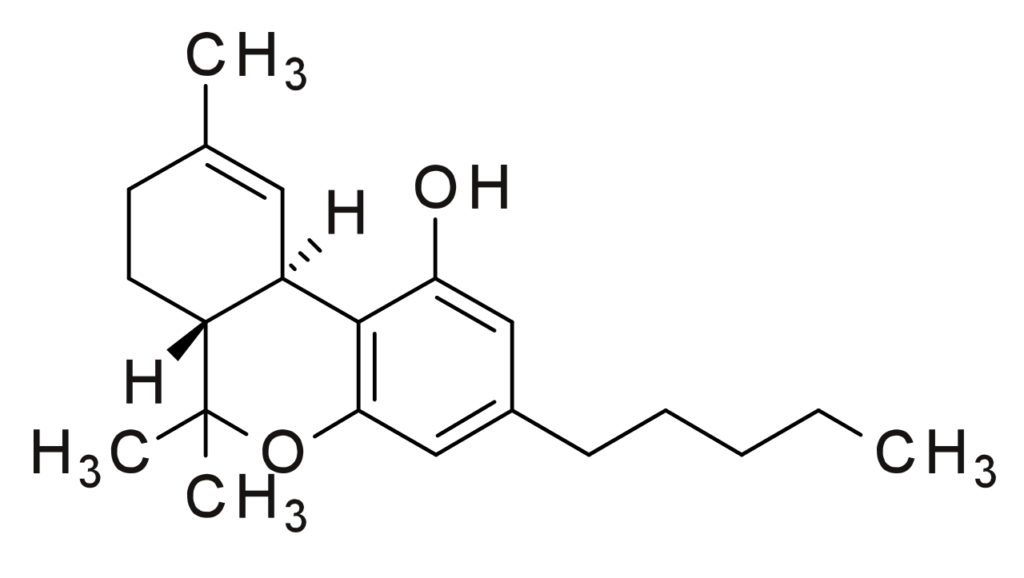
CBD (cannabidiol)
- The main cannabinoid found in hemp flower and non-psychoactive, CBD has the most known therapeutic properties.
- CBD actually counteracts the cognitive impairment created by THC and offers a viable treatment for many psychiatric disorders such as schizophrenia and psychosis.
- CBD also interacts with other receptors outside of the endocannabinoid system such as opioid, dopamine, and serotonin receptors.
- The ability to work in tandem with many different systems throughout the body suggests that CBD science has the potential to seriously influence modern medicine.
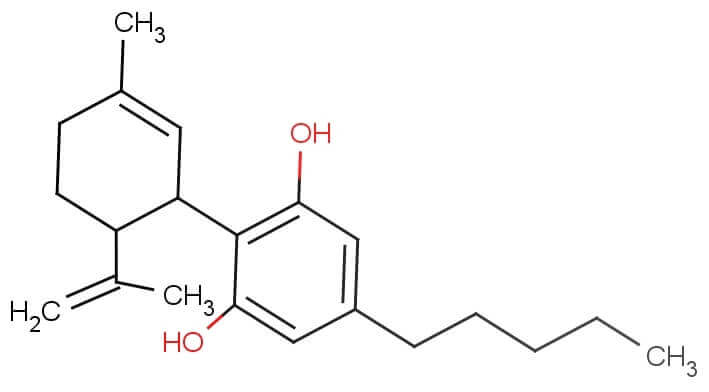
CBG (cannabigerol)
- This lesser-known, non-psychoactive cannabinoid isn’t usually present in large quantities.
- CBG has been known to slow bacterial growth, reduce inflammation, inhibit cell growth in tumor/cancer cells, and promote bone growth.
- This unique compound is known as the “stem cell” of cannabinoids because it’s the building block of others like THC and CBD.

CBN (cannabinol)
- This non-intoxicating compound is the cannabinoid created when THC ages.
- Enhances the effect of other cannabinoids.
- When paired with other cannabinoids it increases their psychoactive, sedative, appetite-stimulating, and anticonvulsant properties.

What cannabinoids are in CBD oil?
Which cannabinoids can be found in a bottle of CBD oil depends on the type of oil it is. Understanding the difference between full-spectrum, broad-spectrum, and isolate products can help you easily and quickly understand what you may be consuming.
Full-Spectrum
Full-spectrum CBD oil is deliberately made to include everything the cannabis plant has to offer, including terpenes, flavonoids, and cannabinoids, to produce a more rounded and fulfilling experience.
As a result, full-spectrum CBD oil contains trace amounts of THC and other non-psychoactive cannabinoids.
Full-spectrum oil is a great choice for those looking to maximize the benefits of their product, but if you’re looking to completely avoid THC or other cannabinoids aside from CBD, it may not be the best option for you.
Broad-Spectrum
Broad-spectrum oil serves as a sort of happy medium between full-spectrum and isolate products. Broad-spectrum CBD oil contains multiple compounds, just like full-spectrum oil, but it typically does not contain any THC.
So, with broad-spectrum oil, the main cannabinoid you’ll encounter is CBD itself. Again, small amounts of other cannabinoids will be present in your oil, but a lack of THC means you won’t have to worry about failing a drug test.
Broad-spectrum oil is a wonderful choice if you’re not enthused by the idea of consuming even trace amounts of THC but don’t want to sacrifice the potential benefits of the entourage effect.
CBD Isolate
CBD isolate oil contains only CBD – no other cannabinoids, including THC.
As the name suggests, CBD isolate oil isolates CBD from other molecules. The extraction process used to create these products ensures that the presence of other additions isn’t an issue.
If you choose to use CBD isolate, you’ll avoid consuming any other cannabinoids, but you may also sacrifice some elements of a more complete experience.
What are the side effects of cannabinoids?
Different cannabinoids can cause different side effects, but for the purpose of this discussion, we’ll consider the side effects of both CBD and THC, since those are really the only two cannabinoids that interact with the human body in a notable way.
The side effects of THC might include:
- Anxiety, paranoia
- Headache
- Dizziness
- Dry mouth
- Nausea
- Raised heart rate
Because the amount of THC that’s found in even full-spectrum, hemp-based products is so small, it’s highly unlikely that it should give CBD patients any problems. Still, it’s useful to be aware of these side effects and keep an eye out for them.
Experiencing side effects from CBD is fairly uncommon, but it can happen. Examples include:
- Fatigue, drowsiness
- Nausea
- Vomiting, diarrhea
- Irritability
These side effects tend to go away on their own, but if they persist, don’t hesitate to consult a medical professional. If you notice side effects after using CBD, consider lowering your dosage, switching products, or discontinuing use until a better solution can be found.
Conclusion- Cannabinoid Science (And More!) Explained
The stigma around cannabis has prevented us from harnessing the enormous therapeutic potential that cannabinoids offer.
With the ability to affect so many different functions and processes throughout the human body, these natural compounds play an important role in our overall health and well-being.
As science advances, cannabinoids will allow us to treat symptoms of different ailments with greater effectiveness and offer hope to everyone.
Creating a space for cannabis in the world of medicine starts with informed and passionate consumers, quality and effective products (like those displayed over at our directory), and dedication. Understanding how the compounds we know to be so beneficial work takes us one step closer to a cannabis-friendly world.
FAQs (Frequently Asked Questions)
Is CBD a cannabinoid?
Yes, CBD is a natural cannabinoid. While it is found in the cannabis plant, it is a non-psychoactive compound, meaning it does not create the “high” feeling. However, it is a very promising compound as it is very effective in treating symptoms like anxiety and chronic pain.
What does cannabinoid mean?
The term “cannabinoid” could refer to any one of three things.
- Any compound occurring in hemp or cannabis. These include both THC and CBD.
- Substances that are produced within the body and interact with the endocannabinoid system. Your endocannabinoid system regulates many systems within your body such as transporting nutrients and storing energy.
- A substance that is synthetically produced to mimic the effects of naturally occurring cannabinoids.
How are cannabinoids taken?
Cannabinoid science has produced various methods to consume cannabinoids like CBD and THC. Some include:
- Oral consumption with edibles like gummies, truffles, or mints.
- Products that you place under your tongue. These can include tincture, sprays, and oils.
- Trans-dermal products that you place on your skins. These come in the form of skin patches, lotions, or creams.
- Vaping or smoking.
What are natural cannabinoids?
“Natural cannabinoids” could refer to the compounds that naturally occur in your body. These chemicals are produced by your body to regulate the endocannabinoid system, an important, overall regulatory system within your body. “Natural cannabinoids” could also refer to the compounds found in cannabis or hemp like CBD or THC, when compared to synthetic compounds created in a lab meant to mimic these naturally-occurring compounds’ effects.
What are the benefits of cannabinoids?
The two most well-known cannabinoids come with a variety of benefits.
THC has been shown to help with:
- Pain
- Muscle spasms
- Insomnia
- Lack of appetite
- Nausea
- Anxiety
- Glaucoma
CBD can aide with:
- Anxiety
- Seizures
- Pain, especially chronic pain
- Psychosis
- Inflammation
- Migraines
- Depression
- Crohn’s Disease
- Cystic Fibrosis
- Epilepsy
- And more
When used in tandem, THC and CBD can increase the effects of one another in a process known as the entourage effect.
CBG, another, lesser-known cannabinoid, promotes bone growth.
